Tomb Art From Ancient Egypt: A Black African Civilization (pics) - Politics - Nairaland
Nairaland Forum / Nairaland / General / Politics / Tomb Art From Ancient Egypt: A Black African Civilization (pics) (128733 Views)
Are The Japanese Descended From Ancient NIGERIANS? / Nigeria: Lessons From Ancient Benin / B Haram Saga; The Real Truth About Islam.(quoted Facts From Ancient History) (2) (3) (4)
(1) (2) (3) (4) (5) (6) (7) (8) (Reply) (Go Down)
| Tomb Art From Ancient Egypt: A Black African Civilization (pics) by Nobody: 4:26am On Sep 20, 2009 |
Black Africans pioneered the world's FIRST major civilization in Egypt, invented writing, architecture, medicine, the sciences, mining, mathematics, philosophy, religion, and the very concept of laws. The pioneering effort of these early Africans led to the modern world we have today.  Pharaoh Narmer. (Menes) First Dynasty. First ruler of Egypt. This bust is dated to 3,100 BC  Tomb Wall of Prince Amenkhepeshet The Prince is the son of King Ramses II & Queen Nefertari, and the grandson of the Pharaoh Seti I.  Khnumhotep II was Overseer of the Eastern Desert, a title granted in Year 19 of the reign of the Pharaoh Amenemhet II, about 1910 B.C., 12th dynasty The tomb of Khnumhotep II is cut deep into the eastern cliffs that border the Nile at Beni Hassan  Priestly ceremony [img]http://www.bluffton.edu/~sullivanm/egypt/saqqara/twobros/figsrope.jpg[/img]  Statue of Horemakhet  Thutmose III [img]http://perso.wanadoo.fr/symbuli/inaccessible_etoile/images_etoile/osiris.JPG[/img] Osiris  Sarcophagus of Horkhebit 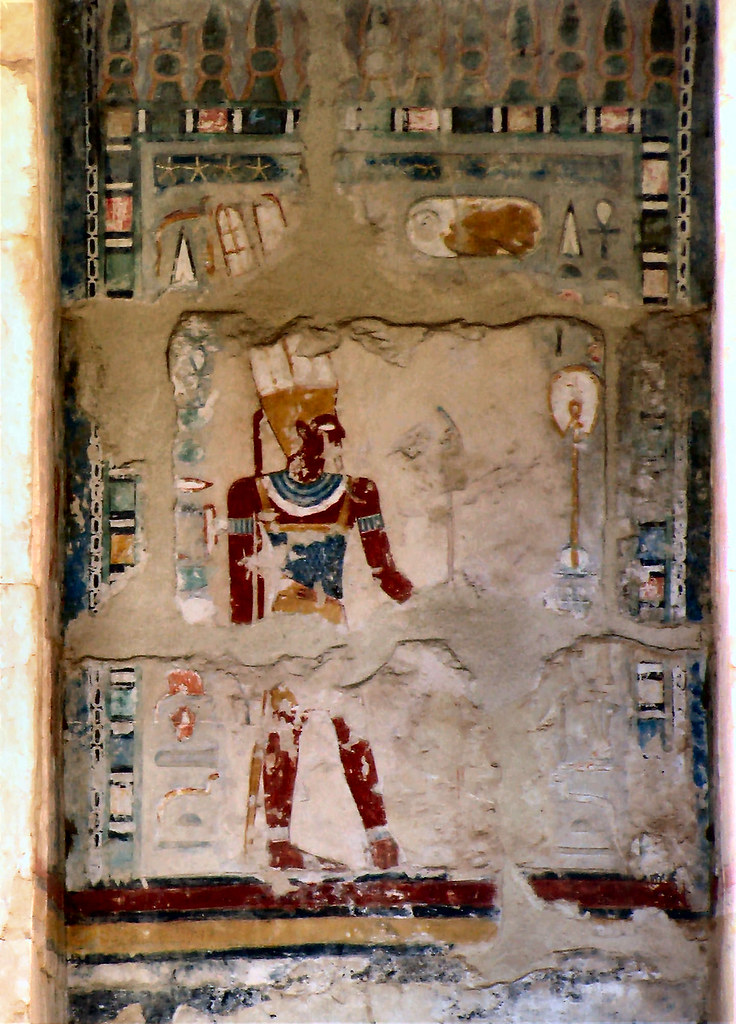 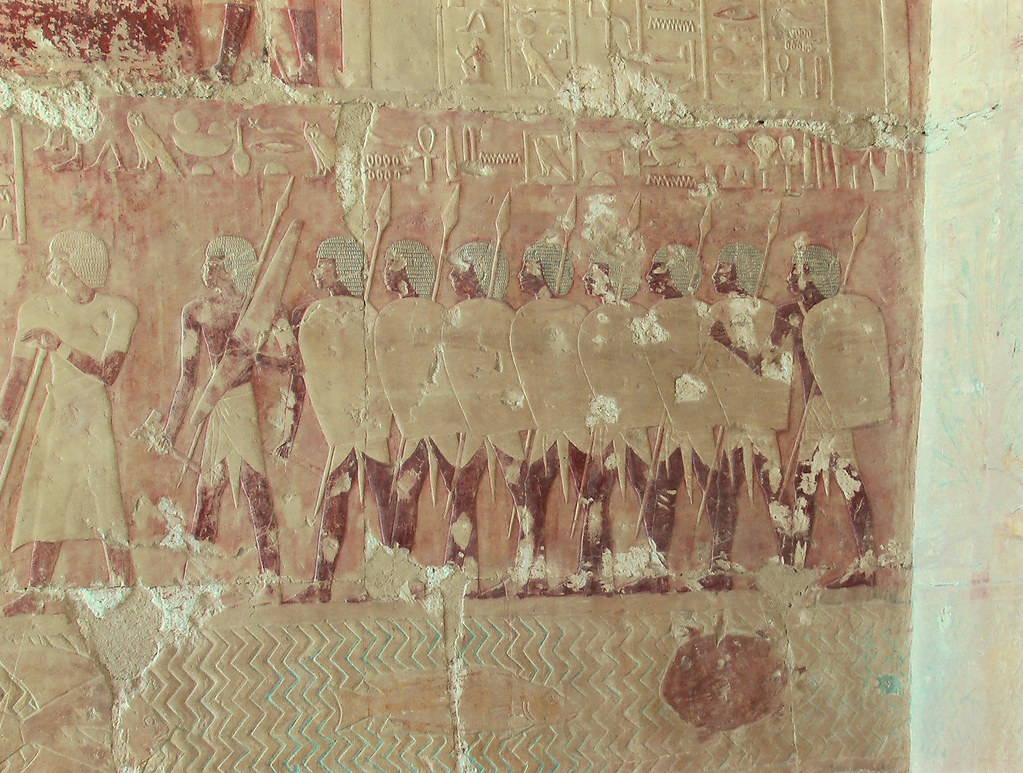 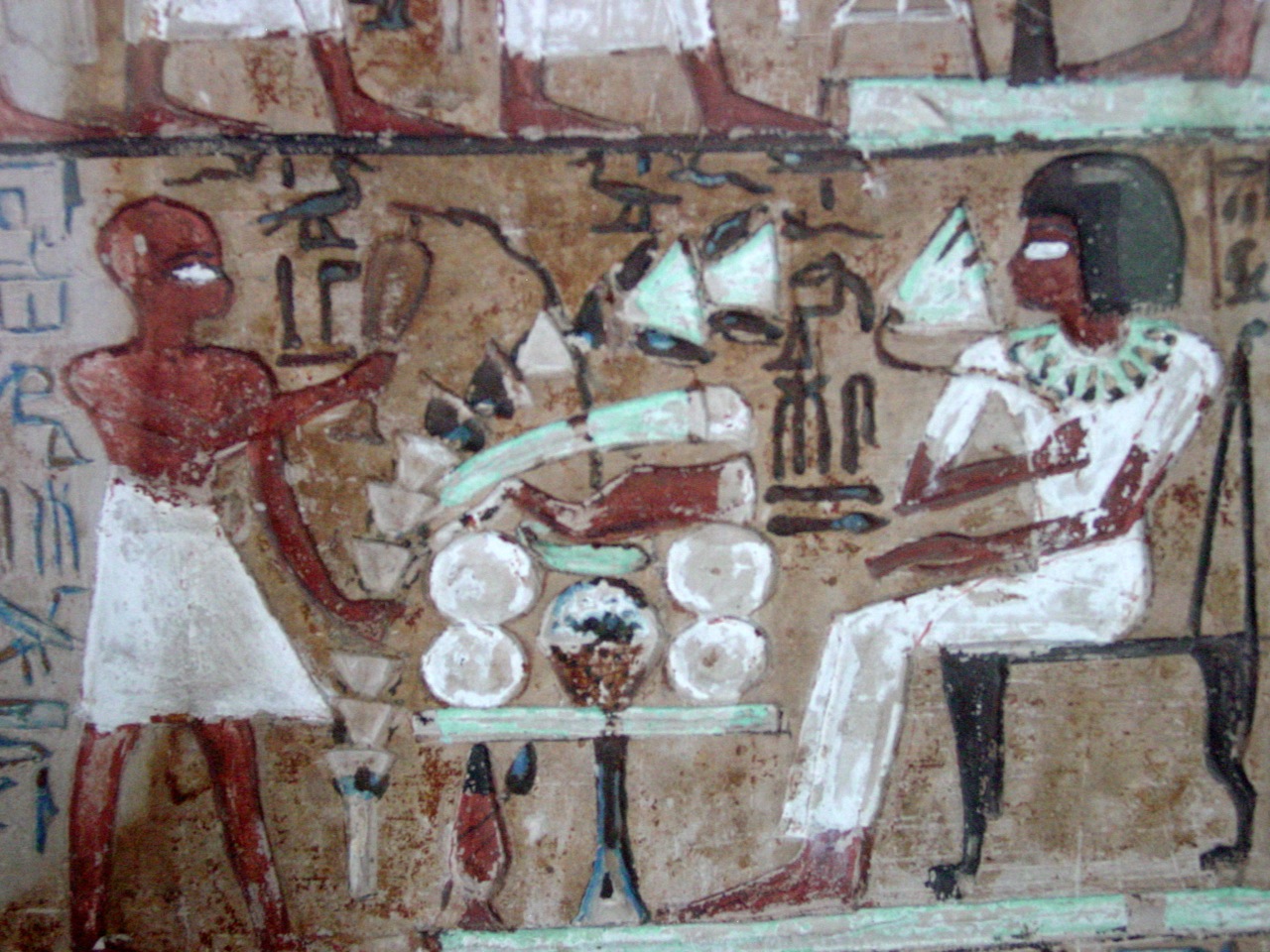  Tomb of King Horemheb - 18th Dynasty  Farmers [img]http://www.thekeep.org/~kunoichi/kunoichi/themestream/isis_black.jpg[/img] Isis  Amenemhet I, 1st King, 12th Dynasty   Period: 6th Dynasty, Reign of Pepi I (2289-2255 BC) Niankhpepi was the "Supervisor of Upper Egpt" and "Chancellor of the King of Lower Egypt".  Material: Papyrus Size: Height 37 cm; Length: 450 cm Location: Western Thebes, Deir el-Bahri Cache (TT 320) Excavation: Antiquities Service Excavations of 1881 Period: 21st Dynasty reign of Pinudjem I (About 1065-1045 BC)  Akheperkare Thutmose I (d. 1492 BC; sometimes spelled Thutmosis or Tuthmose) was the third Pharaoh of the 18th dynasty of Egypt. He ruled Egypt from 1504 BC until his death in 1492 BC. He was the father of the Pharaohs Thutmose II and Hatshepsut, and was the first king to be buried in the Valley of the Kings (tombs KV20 and KV38).  |
| Re: Tomb Art From Ancient Egypt: A Black African Civilization (pics) by Nobody: 4:39am On Sep 20, 2009 |
  Seti I  King Sahure 5th Dynasty (2458-2446 B.C.) Metropolitan Museum of Art.  Bes. Deity. 600 BC   Nefertiti  Middle Kingdom, about 2040-1750 BC  6th Dynasty. Around 2200 BC [img]http://oi.uchicago.edu/gallery/asp_egypt_bahri/bahri08.png[/img] [img]http://oi.uchicago.edu/gallery/asp_egypt_habu/habu28.png[/img]  From the tomb of King Tutunkhamun  Painted limestone relief showing two Princesses shaking sistrums. Excavated from a chapel called the 'Weben Ateb' at the Great Temple in Amarna in 1932. Brooklyn Museum of Art, New York.  Tomb of Rameses III   Tomb of Pharaoh Horemheb  Another new kingdom tomb, Rameses VII: (KV1) 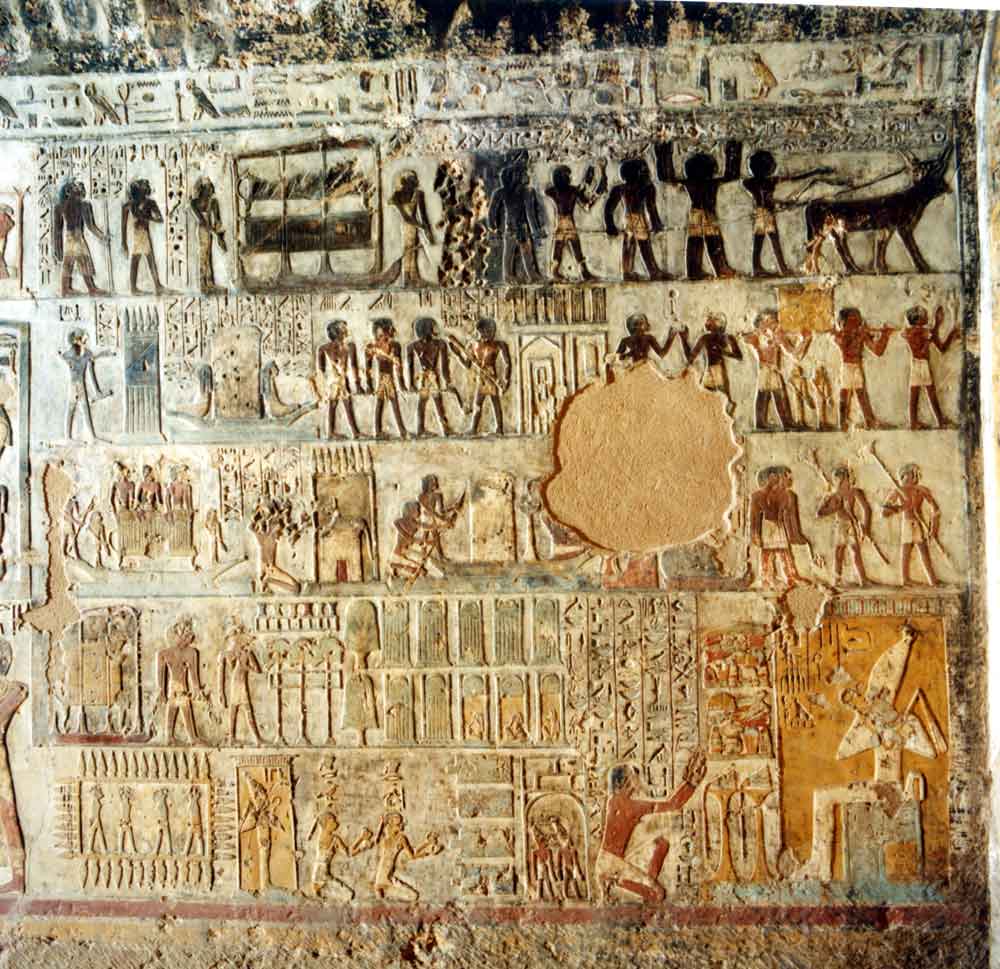  Tomb of Paheri [img]http://www.inicia.es/de/alex_herrero_pardo/Najtmin_prof_mayor.jpg[/img] Prophet of Min & Isis Najtmin: Ancient Egyptians pounded FUFU   Syrians paying tribute, New Kingdom tomb relief. 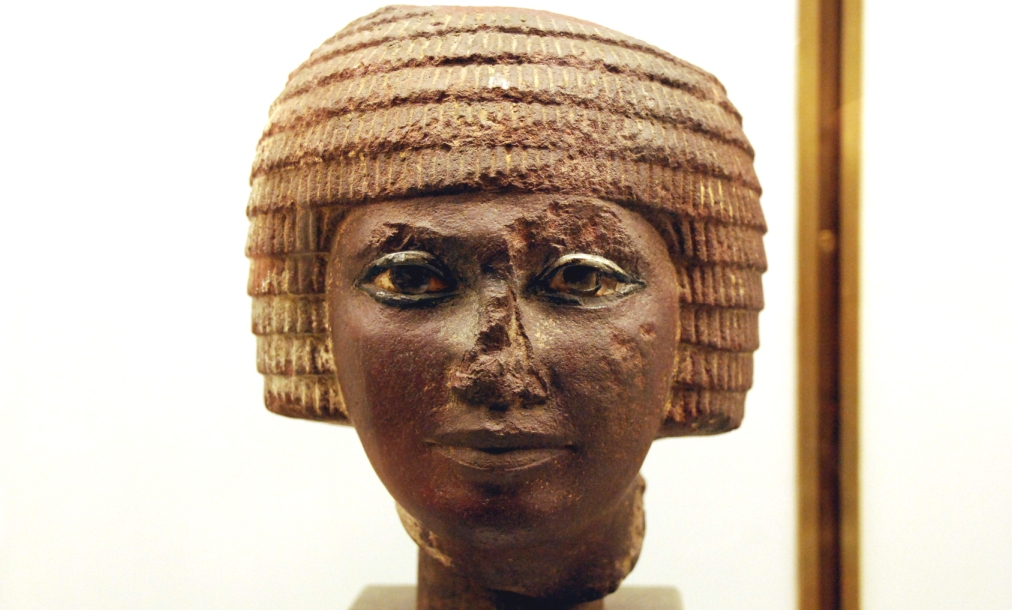 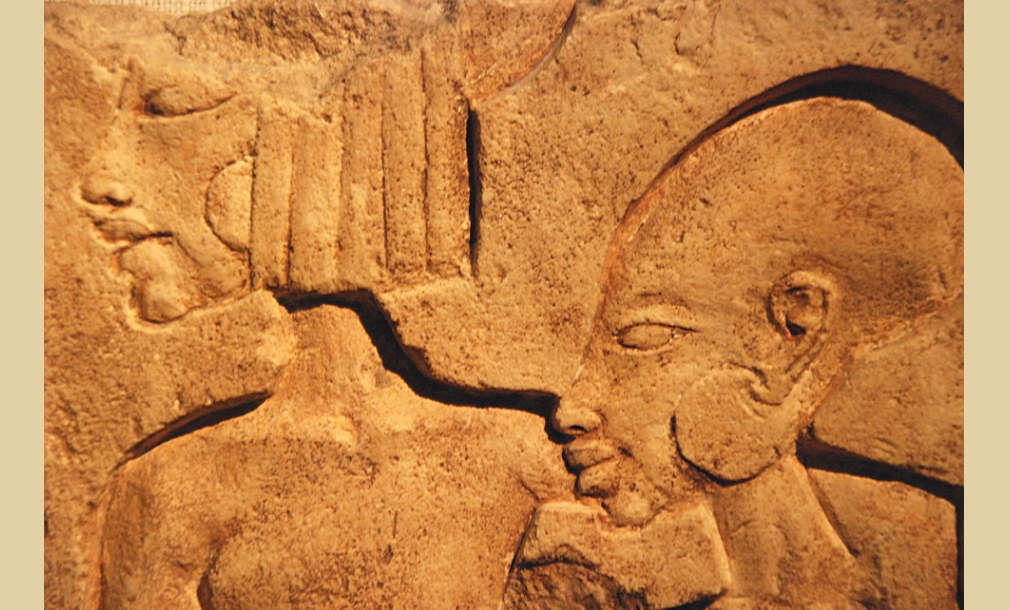   Tomb of Nakht  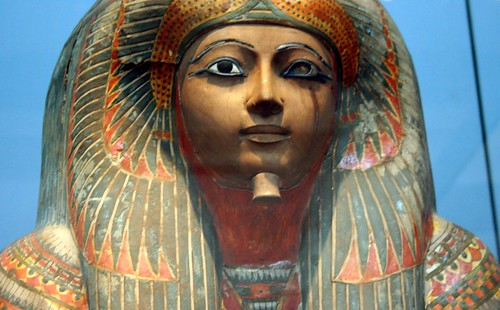 Note Somaloid look  [img]http://www.arts.kuleuven.be/egyptology/Henu/tomb_statue.jpg[/img] [img]http://pzacad.pitzer.edu/~hfairchi/courses/Fall2002/EGYPTSLIDES2_files/slide0015_image018.jpg?SSImageQuality=Full[/img] [img]http://www.bu.edu/anep/570.gif[/img]  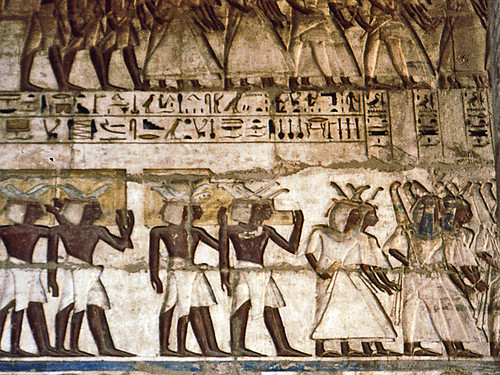 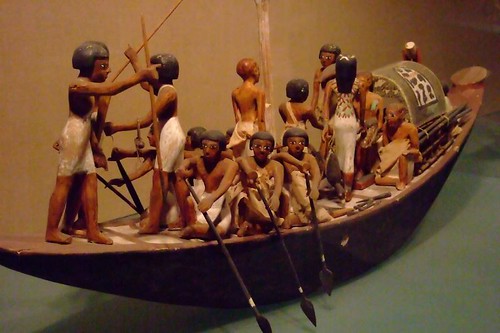 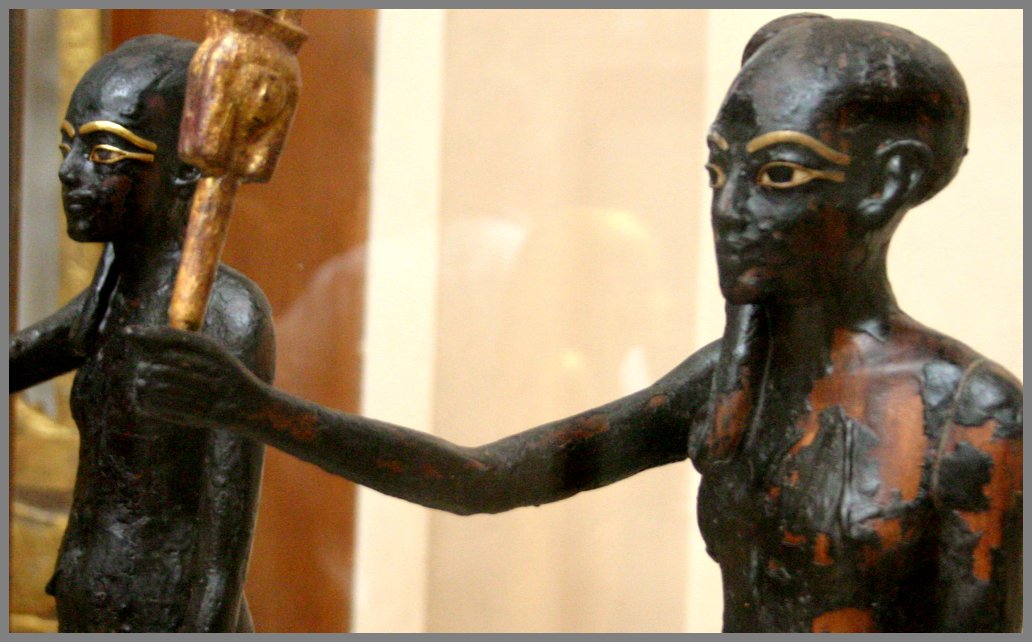 Tomb of king Tutunkhamun [img]http://pzacad.pitzer.edu/~hfairchi/courses/Fall2002/EGYPTSLIDES2_files/slide0015_image018.jpg?SSImageQuality=Full[/img] [img]http://egyptphoto.ncf.ca/em23_640.jpg[/img] Statue of King Nebhepetre II Mentuhotep |
| Re: Tomb Art From Ancient Egypt: A Black African Civilization (pics) by Nobody: 4:51am On Sep 20, 2009 |
THE DOCUMENTARY EVIDENCE Note: All of Africa South of the Sahara was known to the ancient Greeks as ''Ethiopia''. Greek historian Diodorus Siculus. From his own statements we learn that he traveled in Egypt around 60 BC. His travels in Egypt probably took him as far south as the first Cataract. "They (the Ethiopians) say also that the Egyptians are colonists sent out by the Ethiopians, Osiris ["King of Kings and God of Gods] having been the leader of the colony . . . they add that the Egyptians have received from them, as from authors and their ancestors, the greater part of their laws." Diodorus's declared intention to trace the origins of the cult of Osiris, alias the Greek Dionysus also commonly known by his Roman name Bacchus. The Homeric Hymn "To Dionysus" locates the birth of Dionysus in a mysterious city of Nysa "near the streams of Aegyptus" (Hesiod 287). Diodorus cites this reference as well as the ancient belief that Dionysus was the son of Ammon, king of Libya (3.68.1), and much of Book 3 of the Bibliotheka Historica is devoted to the intertwined histories of Dionysus and the god-favored Ethiopians whom he believed to be the originators of Egyptian civilization. [emphasis added] (1st century B.C., Diodorus Siculus of Sicily, Greek historian and contemporary of Caesar Augustus, Universal History Book III. 2. 4-3. 3) Diodorus devoted an entire chapter of his world history, the Bibliotheke Historica, or Library of History (Book 3), to the Kushites ["Aithiopians"] of Meroe. Here he repeats the story of their great piety, their high favor with the gods, and adds the fascinating legend that they were the first of all men created by the gods and were the founders of Egyptian civilization, invented writing, and had given the Egyptians their religion and culture. (3.3.2). "Now they relate that of all people the Aithiopians [Ethiopians] were the earliest, and say that the proofs of this are clear. That they did not arrive as immigrants but are the natives of the country and therefore rightly are called authochthonous is almost universally accepted. That those who live in the South are likely to be the first engendered by the earth is obvious to all. For as it was the heat of the sun that dried up the earth while it was still moist, at the time when everything came into being, and caused life, they say it is probable that it was the region closest to the sun that first bore animate beings". [160,000-year-old fossilized skulls uncovered in Ethiopia are oldest anatomically modern humans.] Diodorus continues: "They further write that it was among them that people were first taught to honor the gods and offer sacrifices and arrange processions and festivals and perform other things by which people honor the divine. For this reason their piety is famous among all men, and the sacrifices among the Aithiopians are believed to be particularly pleasing to the divinity," "The Aithiopians [Ethiopians] say that the Egyptians are settlers from among themselves and that Osiris was the leader of the settlement.The customs of the Egyptians, they say, are for the most part Aithiopian, the settlers having preserved their old traditions. For to consider the kings gods, to pay great attention to funeral rites, and many other things, are Aithiopian practices, and also the style of their statues and the form of their writing are Aithiopian. Also the way the priestly colleges are organized is said to be the same in both nations. For all who have to do with the cult of the gods, they maintain, are [ritually] pure: the priests are shaved in the same way, they have the same robes and the type of scepter shaped like a plough, which also the kings have, who use tall pointed felt hats ending in a knob, with the snakes that they call the asp (aspis) coiled round them." "There are also numerous other Aithiopian tribes [i.e. besides those centered at Meroe]; some live along both sides of the river Nile and on the islands in the river, others dwell in the regions that border on Arabia [i.e. to the east], others again have settled in the interior of Libya [i.e. to the west]. The majority of these tribes, in particular those who live along the river, have black skin, snub-nosed faces, and curly hair". (Diodous Siculus, Bibliotheke, 3. Translated by Tomas Hagg, in Fontes Historiae Nubiorum, vol. II: From the Mid-Fifth to the First Century BC (Bergen, Norway, 1996)) Aristotle (384-322 B.C.E.) Greek philosopher, scientist, and tutor to Alexander the Great. Aristotle is said to have written 150 philosophical treatises. "Too black a hue marks the coward as witness Egyptians and Ethiopians and so does also too white a complexion as you may see from women, the complexion of courage is between the two." (Physiognomics, Vol. VI, 812a) Aristotle makes reference to the hair form of Egyptians and Ethiopians: "Why are the Ethiopians and Egyptians bandy-legged? Is it because the bodies of living creatures become distorted by heat, like logs of wood when they become dry? The condition of their hair supports this theory; for it is curlier than that of other nations, and curliness is as it were crookedness of the hair." (Physiognomics, Book XIV, p. 317) The evidence of Lucian (Greek writer, 125 B.C.) is as explicit as that of the previous writers. He introduces two Greeks, Lycinus and Timolaus, who start a conversation: Lycinus (describing a young Egyptian): "This boy is not merely black; he has thick lips and his legs are too thin . . . his hair worn in a plait behind shows that he is not a freeman." Timolaus: "But that is a sign of really distinguished birth in Egypt, Lycinus, All freeborn children plait their hair until they reach manhood. It is the exact opposite of the custom of our ancestors who thought it seemly for old men to secure their hair with a gold brooch to keep it in place." (Lucian, Navigations, paras 2-3) Herodotus (circa 400 bc) (Known to western historians as the Father of History) Herodotus also asserted that "the names of nearly all the gods came to Greece from Egypt . . . for the names of all the gods have been known in Egypt from the beginning of time . . . It was the Egyptians too who originated, and taught the Greeks . . . ceremonial meeting, processions and liturgies . . . The Egyptians were also the first to assign each month and each day to a particular deity, and to foretell the date of a man's birth, his character, his fortunes, and the day of his death . . . The Egyptians, too have made more use of omens and prognostics than any other nation. . ." (Herodotus, The Histories, 149-150; 152; 159). ''There can be no doubt that the Colchians are an Egyptian race. Before I heard any mention of the fact from others, I had remarked it myself. After the thought had struck me, I made inquiries on the subject both in Colchis and in Egypt, and I found that the Colchians had a more distinct recollection of the Egyptians, than the Egyptians had of them. Still the Egyptians said that they believed the Colchians to be descended from the army of Sesostris. My own conjectures were founded, first, on the fact that they are black-skinned and have woolly hair, which certainly amounts to but little, since several other nations are so too. But further and more especially, on the circumstance that the Colchians, the Egyptians, and the Ethiopians, are the only nations who have practised circumcision from the earliest times. The Phoenicians and the Syrians of Palestine themselves confess that they learned the custom of the Egyptians. And the Syrians who dwell about the rivers Thermodon and Parthenius, as well as their neighbors the Macronians, say that they have recently adopted it from the Colchians. Now these are the only nations who use circumcision, and it is plain that they all imitate herein the Egyptians. With respect to the Ethiopians, indeed, I cannot decide whether they learned the practice of the Egyptians, or the Egyptians of them (it is undoubtedly of very ancient date in Ethiopia). But that the others derived their knowledge of it from Egypt is clear to me, from the fact that the Phoenicians, when they come to have commerce with the Greeks, cease to follow the Egyptians in this custom, and allow their children to remain uncircumcised.'' (Herodotus, The Histories, Book 2:104) The opinion of the ancient writers on the Egyptians is more or less summed up by French Egyptologist Gaston Maspero The Dawn of Civilization (1894), when he says, "By the almost unanimous testimony of ancient historians, they [the Egyptians] belong to an African race which first settled in Ethiopia on the Middle Nile: following the course of the river they gradually reached the sea." The German scholar, Eugen Georg, in his book The Adventure of Mankind (1931) p. 121, tells us about the ". . . world-wide dominance of Ethiopian representatives of the black race. They were supreme in Africa and Asia. In upper Egypt and India they erected mighty religious centers and mastered a perfect technique in the molding of bronze --- and they even infiltrated through Southern Europe for a thousand years." In his book Egypt, British scholar Sir E.A. Wallis Budge says: "The prehistoric native of Egypt, both in the old and in the new Stone Ages, was African and there is every reason for saying that the earliest settlers came from the South." He further states: "There are many things in the manners and customs and religions of the historic Egyptians that suggests that the original home of their prehistoric ancestors was in a country in the neighborhood of Uganda and Punt." (Some historians believe that the biblical land of Punt was in the area known on modern maps as Somalia.) Stephanus of Byzantium, who is said to represent the opinions of the most ancient Greeks, says: "Ethiopia was the first established country on the earth, and the Ethiopians were the first who introduced the worship of the Gods and who established laws." Quoted by John D. Baldwin, Prehistoric Nations, p. 62. Arnold Hermann Heeren (1760-1842), Professor of History and Politics in the University of Gottengen and one of the ablest of the early exponents of the economic interpretation of history, published, in the fourth and revised edition of his great work Ideen Uber Die Politik, Den Verkehr Und Den Handel Der Vornehmsten Volker Der Alten Weld, a lengthy essay on the history, culture, and commerce of the ancient Ethiopians, which had profound influence on contemporary writers in the conclusion that it was among these ancient Black people of Africa and Asia that international trade was first developed. He thinks that as a by-product of these international contacts there was an exchange of ideas and cultural practices that laid the foundations of the earliest civilizations of the ancient world. Heeren in his researches says: "From the remotest times to the present, the Ethiopians have been one of the most celebrated, and yet the most mysterious of nations. In the earliest traditions of nearly all the civilized nations of antiquity, the name of this distant people is found. The annals of the Egyptian priests are full of them, and the nations of inner Asia, on the Euphrates and Tigris, have interwoven the fictions of the Ethiopians with their traditions of the wars and conquests of their heroes; and, at a period equally remote, they glimmer in Greek mythology. When the Greeks scarcely knew Italy and Sicily by name, the Ethiopians were celebrated in the verses of their poets, and when the faint gleam of tradition and fable gives way to the clear light of history, the lustre of the Ethiopians is not diminished." The French writer Constantin-François Volney (1757-1820), in his important work, The Ruins of Empires, extends this point of view by saying that the Egyptians were the first people to "attain the physical and moral sciences necessary to civilized life." In referring to the basis of this achievement he states further that, "It was, then, on the borders of the Upper Nile, among a Black race of men, that was organized the complicated system of worship of the stars, considered in relation to the productions of the earth and the labors of agriculture; and this first worship, characterized by their adoration under their own forms and national attributes, was a simple proceeding of the human mind." Volney's Ruins; or, Meditation on the Revolutions of Empires, Boston, J. Mendum, 1869 Flora Shaw's (alias Lady Flora Lugard) book is an extraordinary look at the history of Africa, which she gathered from countless sources, and one would imagine a great deal of it came from the British Library and from the archives of The Times of London, for whom she had for many years been the Foreign Political Correspondent. She had always been known to be an intensive researcher into her subject matter, and one wonders at the months and probably years she put into this undertaking, which became the reference work for so many future books on Africa. This book was first published 100 years ago showing the detail and descriptive power, and the greatness that Africa once was. Lady Lugard argues that: "When the history of Negroland comes to be written in detail, it may be found that the kingdoms lying towards the eastern end of Sudan (classical home of Ancient Ethiopians) were the home of races who inspired, rather than of races who received, the tradition of civilization associated for us with the name of ancient Egypt. For they cover on either side of the Upper Nile between the latitudes of ten degrees and seventeen degrees, territories in which are found monuments more ancient than the oldest Egyptian monuments. If this should prove to be the case and civilized world be forced to recognize in a black people the fount of its original enlightenment, it may happen that we shall have to revise entirely our view of the black races, and regard those who now exist as the decadent representatives of an almost forgotten era, rather than as the embryonic possibility of an era yet to come." "The fame of the ancient Ethiopians (ancient Kushites) was widespread in ancient history. Herodotus described them as the tallest, most beautiful and long-lived of the human races, and before Herodotus, Homer, in even more flattering language, described them as the most just of men, the favorites of the gods. The annals of all the great early nations of Asia Minor are full of them. The Mosaic records allude to them frequently; but while they are described as the most powerful, the most just, and the most beautiful of the human race, they are constantly spoken of as Black, and there seems to be no other conclusion to be drawn than at that remote period of history, the leading race of the Western World was a Black race." Lady Lugard/Flora Shaw Lugard, Asa G. Hilliard, III, A Tropical Dependency: An Outline of the Ancient History of the Western Sudan With an Account of the Modern Settlement of Northern Nigeria, Black Classic Press (1996) http://wysinger.homestead.com/blackegypt101.html 2 Likes 1 Share |
| Re: Tomb Art From Ancient Egypt: A Black African Civilization (pics) by Beaf: 4:54am On Sep 20, 2009 |
Thank you for posting these pics. I would implore fellow Africans to take notice of the skin colour of the ancient Egyptians, turn that over in their minds and go back to their villages to seek out the custodians of their history. We must reclaim our history and tell it entirely from our own perspective. 3 Likes |
| Re: Tomb Art From Ancient Egypt: A Black African Civilization (pics) by Nobody: 5:28am On Sep 20, 2009 |
You're welcome Beaf.  |
| Re: Tomb Art From Ancient Egypt: A Black African Civilization (pics) by shotster50(m): 6:53am On Sep 20, 2009 |
Good work poster. |
| Re: Tomb Art From Ancient Egypt: A Black African Civilization (pics) by SapeleGuy: 12:11pm On Sep 20, 2009 |
Great thread - Of particular interest is the 'Isis' angle and the genesis of islam & judeo-christian religions. Amazingly, you will still find our people who will argue blind that these religions didn't start in africa. 2 Likes |
| Re: Tomb Art From Ancient Egypt: A Black African Civilization (pics) by Nobody: 5:18pm On Sep 20, 2009 |
Sapeleguy, there's widespread evidence of continuity of Ancient Egyptian practises across Nigeria and Africa. Most ethnic groups in West Africa have a tradition of having migrated from the north-east in antiquity. These migrations were caused primarily by foreign invasions and desertification of the Sahara. ANCIENT EGYPTIAN GODS AND THEIR MEANING A) We still have Cults or Religions of Isis of Ancient Egypt worshipped and known as Issi in Urhobo and Benin. B) The Urhobo ethnic group still exclaim shu to the god of Air till today C) The Yoruba ethnic group still swear to the Sun god “Ra” an Ancient Egyptian god by saying Rara in a bid to disagree to an accusation or in refusal D) The Yoruba still say Ptah Ptah in saying everything which actually is a god name in ancient Egypt . E) The Urhobo ethnic group still refer to the Benin Monarch as OBA RA KA till today. In Ancient Egypt the Ba means immortal, Ra means the Sun god with attributes of all-powerful, self created, supreme etc, while Ka is the personality of the body. Therefore, the Monarch has the personality of the immortal Sun god. F) Amon , the name of a city for Priests in Ancient Egypt has now evolved to mean Amen during and after Prayers today Amon (Amono, Amun, Amen): The great god of Ita epe (It epet) represented as a Man, Sun, and identified as Amon-Ra (Ilaje call their God Amono) Edjo (Wadjet, Buto): The cobra-goddess of Buto in the Delta of Ancient Egypt . Guardian deity of lower Egypt seen in the Diadem of Royals. The Benin and Urhobo of today still worship Edjo Horus : (Haroeris, Harpocrates, Harsiesis, Re-Harakhty). Son of Osiris and Isis. Represented by the falcon-deity. Originally the sky god. It represents, strength, vigour and self sacrifice. Horus-at the full title, corresponds with the continuation of traditional worship across Africa in the form of Orisha, Olisa, Alusi, and the various titles given to the worship. Isis : Is known as the divine mother and wife of Osiris and Horus respectively. The Queen of Heaven and Earth. [ Known in Urhobo and Benin as Issi, in fact; there is a cult known as Igbe in Urhobo, Benin and London . There is also a region named issi in Edo State . The Igbe Cult still thrives in London today. The Ancestor of some Urhobo people is known as Isis , variously called Esezi , Userkere , and Isesi in especially Okpe sub-cultural group of Urhobo . Pharaoh Djedakare of the 5 th dynasty which date back to 2465-2323 BC was also known and called Isesi ]. Osiris (Asar): The god of the underworld (He was killed by Seth [ Esu in Yoruba, Satan in English ] identified as the king of the dead, also as a god of inundation and vegetation; represented as a mummified king, worshipped in Abydos Egypt . Seen also as the great judge of the dead. [ Uvwie subcultural group of Urhobo in every year perform the spiritual rites of passage from the world to the land of the dead by driving the dead using sticks and leaves in beating roof-top of houses from beginning of town to end of town, they call it Essa (me bie essa hoom, madjirimion hoom, ooh, is a ritual song used ]. The Izon ethnic group worship Oziri god. [It is likely the word Zion originated from Izon people who once inhabited the city of On in Ancient Egypt. Remove the “I” at the front of Izon and place it behind the “Z” and you get Zion ] Or using the OZIRI , cancel O, R, I and you are left with ZI, now add the town name On , you will get ZION AND IZON. Remember, the Izon People of Nigeria who inhabited On have Oziri as their god. Ptah : Creator-god of everything in Memphis , represented as a man. The patron god of craftsmen. The Yoruba ethnic group word of Pata-Pata which means everything got its origin from this god. Ra (Re): The Sun god of Heliopolis ; supreme judge, it is often linked with other gods which aspire to universality. Known as Amono-Ra in Yoruba or Ilaje . The Celestial denomination of Christianity sings: Ya ra sa ra Amon . [ In Hebrew and Ancient Egypt ; Ysra/Sar means Prince/high Official. Therefore, Yara sara Amon means Prince or High Official of Amon city in Ancient Egypt ]. Seth (Set, Sutekh, Satani, Satan, Esu, Ogiuwu)[ god of the Hyksos ]: The god of storms, chaos and violence, identified with many types of animals like, Okapi, backside, pig (swine), hippopotamus and also represented as animal with no identification. Brother and murderer of Osiris because of jealousy to rule the world. He is the rival of Horus who killed him to avenge his father's murder. A famous god whom every sinner owes their credit. Shu: The god of Air and Tefnut were the pair of gods who were present during creation in Ancient Egypt. The Urhobo ethnic group brought this culture with them from Egypt . They exlaim Shu when surprised during a discussion. Sometimes, “O” is added to it nowadays to make Shu-o. http://www.urhobo-world.org/Egypt%20History%20of%20Urhobo.htm |
| Re: Tomb Art From Ancient Egypt: A Black African Civilization (pics) by naijaking1: 7:03pm On Sep 20, 2009 |
After looking at these pictures, how could anyone continue to sound politically correct by saying" Egyptians were neither black Africans nor white Europeans, they were simply Egyptians"  2 Likes |
| Re: Tomb Art From Ancient Egypt: A Black African Civilization (pics) by madlady(f): 7:39pm On Sep 20, 2009 |
ROSSIKE What a fantastic thread, I nearly did not see said, (my brother told me to take a look) Thank you for taking the time do the write-ups, very informative. Why no section on African/Nigerien art and artists  . .1 Like |
| Re: Tomb Art From Ancient Egypt: A Black African Civilization (pics) by bawomolo(m): 8:34pm On Sep 20, 2009 |
naijaking1: probably the term "African" is a modern day invention that didn't exist during this civilization. afrocentrists and eurocentrists are history revisionists who should be ignored. 1 Like |
| Re: Tomb Art From Ancient Egypt: A Black African Civilization (pics) by Gamine(f): 8:47pm On Sep 20, 2009 |
Egyptians were just Egyptians, simple and short. My eyes are open and thats what i see. |
| Re: Tomb Art From Ancient Egypt: A Black African Civilization (pics) by Abagworo(m): 11:04pm On Sep 20, 2009 |
i will still conduct further investigations.those black looking pix look made up. |
| Re: Tomb Art From Ancient Egypt: A Black African Civilization (pics) by Nobody: 11:21pm On Sep 20, 2009 |
madlady wrote: ROSSIKE Thanks. Actually what I'm trying to do is address our history, starting from the beginning, several thousand years ago. I don't think Africans will understand their history until they can re-connect it to the Nile Valley. If you read The Destruction of Black Civilization by Dr Chancellor Williams, he traced the fall of black civilization to our conduct in ancient Egypt, where, after thousands of years of dominating the Meditarrenean and the known world, a combination of decadence and infighting among the black leaders opened the way for foreign invasions of the Nile Valley, which eventually led to the ''whitening'' of Egypt, and the southward dispersal of blacks. 1 Like |
| Re: Tomb Art From Ancient Egypt: A Black African Civilization (pics) by blackspade(m): 11:22pm On Sep 20, 2009 |
GOOD FIND!! I'm glad the f.ucking Arabs weren't able to repaint these ancient artifacts! |
| Re: Tomb Art From Ancient Egypt: A Black African Civilization (pics) by Beaf: 11:27pm On Sep 20, 2009 |
Abagworo: Egyptians painted themselves as black because they were black. I am surprised you never noticed the colour before, but that is the power of suggestion for you. If someone keeps vigorously repeating that white is black; there is a danger that given time we will believe it without question. Its the same way, scholar after scholar tells us that the pyramids served as pharoahs tombs, yet no mummy (or trace of one) has ever been found in a pyramid; they are all in the valley of Kings. We really need to sieze our history back from foreigners. You will be astonished at how much you can learn from our custodians of history if you can gain their attention. From the ethnic groups the OP has mentioned, two very obvious places and rich sources for exploration are, the palace of the Oroje of Okpe and the palace of the Oba of Benin. You might not get all you need (not being an innitiate) but you'll be very far from dissapointed, especially if you go prepared with your own questions. Edo people especially can trace their history (even providing dates) thousands of years back. So, add this post to your favourites.  Scene for Tutankhamun's tomb. . .Guy was black! 1 Like 1 Share
|
| Re: Tomb Art From Ancient Egypt: A Black African Civilization (pics) by Abagworo(m): 12:06am On Sep 21, 2009 |
I've conducted little read up and i believe all the southern west africans did actually have links with egypt.they were 100% blacks.looking very much like oyo yorubas in features.nri igbos might actually be jews but not all igbos and yorubas have egypt/israeli roots. |
| Re: Tomb Art From Ancient Egypt: A Black African Civilization (pics) by Nobody: 12:20am On Sep 21, 2009 |
blackspade said: GOOD FIND!! Well, blackspade, to an extent the white and arab conspiracy to artificially de-Africanize the roots of Egypt has had its successes, however limited: The last two centuries saw a rise in European/Arab racism, and with this, came attempts to disguise the African roots of Egypt. A common method used was to erase, scrape off, or chisel out the African features in many of the artefacts, to create either racial ambiguity, or in some cases, to re-create those features to appear caucasoid. In the pics below, you will see a shocking number of artefacts with their noses and lips scraped off, to create racial ambiguity, including the Sphinx at Giza.  When visiting Egypt today, this is what we see of The Sphinx of Giza.  This is what Vivant Denon saw in 1798 before the Sphinx was defaced.   Rameses  This figure has had its nose reconstructed to look caucasoid. Very poor job by the way.      Tomb of King Tutunkhamun  Queen Tiye, Mother of King Tut        1 Like 1 Share |
| Re: Tomb Art From Ancient Egypt: A Black African Civilization (pics) by naijaking1: 12:24am On Sep 21, 2009 |
@Beaf Good talk. @ROSSIKE Excellent work I was just about to ask why all the scrapping-off-the-nose-thing in almost all Egytptian status. Somebody sure didn't want to see the negroid broad/flat nose and thick lips of those images. |
| Re: Tomb Art From Ancient Egypt: A Black African Civilization (pics) by Nobody: 12:24am On Sep 21, 2009 |
Naijaking, you're right. I wonder why they even bother scraping off the noses in these artefacts  In almost all instances, the base of the nose is still wide enough to let anyone see it's an African. I guess anything to create even an element of ''doubt'' suffices for them.  2 Likes |
| Re: Tomb Art From Ancient Egypt: A Black African Civilization (pics) by Gamine(f): 12:33am On Sep 21, 2009 |
These things still dont look like me. |
| Re: Tomb Art From Ancient Egypt: A Black African Civilization (pics) by naijaking1: 12:38am On Sep 21, 2009 |
Gamine: Your prescription eyeglasses need renewal, or your mirror is cracked. 2 Likes |
| Re: Tomb Art From Ancient Egypt: A Black African Civilization (pics) by Nobody: 12:46am On Sep 21, 2009 |
Anyone find anything similar in the two dwarf figures? The first one is a sculpture of a Yoruba deity called a Child of Obatala. Obatala is a Yoruba god. And the second one is the Ancient Egyptian god Bes. And they are both wearing a skull necklace. [img]http://hum.lss.wisc.edu/hjdrewal/Ife3.jpg[/img] http://hum.lss.wisc.edu/hjdrewal/Ife.html 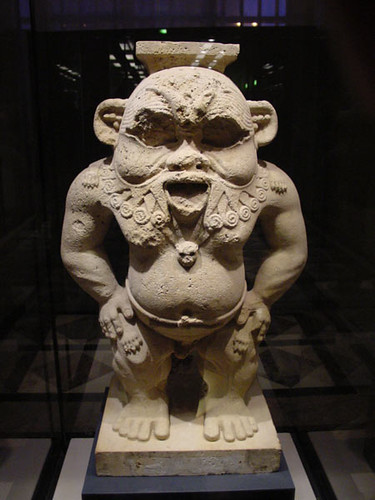 http://www.livescience.com/php/multimedia/imagedisplay/img_display.php?pic=051228_bes_02.jpg&cap=A+statue+of+Bes,+the+god+of+love,+childbirth,+and+sexuality+in+ancient+Egypt.+credit:+Louvre+Museum,+Paris Hmmmm |
| Re: Tomb Art From Ancient Egypt: A Black African Civilization (pics) by Nobody: 1:00am On Sep 21, 2009 |
[B]LINGUISTIC AND CULTURAL CONNECTIONS[/B] The Egyptian religion and other cultural practices show strong African, and also Yorubic characteristics. These can be seen in the following areas: 1. The lost wax method of brass or bronze making, which was common to both the Yoruba peoples (particular Ife) and the ancient Egyptians. 2. The ritual of initiation 3. Striving to achieve the ultimate in “Good” and truth (summun bonum) 4. The doctrine of transmigration of soul and reincarnation is widely believed in, by both peoples. 5. The concept of the ‘god king’. 6. Aspiration to achieve the great ‘good’ of the gods – ‘wealth health and long life’. 7. The Yorubic regalia, in most cases, are strikingly similar to pharoanic ones. 8. Veneration of the Ram in both places. Among the eastern Yorubas (Itsekiri especially, most of the water deities are depicted as ram following the predynastic and pharoanic patterns). 9. Both peoples answer the theophorous names LINGUISTIC SIMILARITIES One of the largest inhabitants of Egypt were Yoruboid , thus it will be expected that a good percentage of the Yoruba language will correspond to the Ancient Egyptian language of Medu Neter. See the table below. EGYPT - YORUBA 1. Wu (rise) - Wu (rise) 2. Ausa (Osiris, father of the gods) - Ausa (father) 3. Ere (python/ Serpent) - Ere (Python / Serpent) 4. Horise (a great god) - Orise (a great god) 5. Sen (group of worshippers) - Sen ( to worship) 6. Ged (to chant) - Igede (a chant) 7. Ta (sell / offer) - Ta (sell/offer) 8. Sueg (a fool) - Suegbe (a fool) 9. On ( living person) - One ( living person) 10. Kum (a club) - Kumo( a club) 11. Enru (fear / terrible) - Eru (fear / terrible 12. Kun / qun (brave man) - Ekun (title of a brave man) 13. Win (to be) - Wino (to be) 14. Odonit (festival) - Odon (festival) 15. Ma or mi (to breath) - Mi. (to breathe) 16. Tebu (a town) - Tebu (a town) 17. Adumu (a water god) - Adumu (a water god) 18. Khu (to kill) - Ku (die) 19. Rekha (knowledge) - Larikha (knowledge) 20 Hika (evil) - Ika (evil) 21 Mhebi (humble) - Mebi, humble to ones family 22 Sata (perfect) - Santan (perfect) 23 Unas (lake of fire) - Una (fire) 24 Tan (complete) - Tan (complete) 25 Beru (force of emotion) - Beru (fear) 26 Em (smell) - Emi (smell) 27 Pa (open) - Pa (break open) 28 Bi (to become) - Bi (to give birth, to become) 29 Hepi (a water god) - Ipi (a water god) 30 Sami (water god) - Sami (a water god) 31 Osiri (a water god) - Oshiri (a water god) 32 Heqet – Re (frog deity) - Ekere (the frog) 33 Feh (to go away) - Feh (to blow away) 34 Kot (build) - Ko (build) 35 Kot (boat) Oko (boat) 36 Omi (water) - Omi (water) 37 Ra (time) - Ira (time) 38 Oni (title of Osiris) - Oni (title of the king of Ife) 39 Budo (dwelling place) - Budo (dwelling place) 40 Dudu (black image of Osiris) - Dudu (black person) 41 Un (living person) - Una (living person) 42 Ra (possess) - Ra (possess/buy) 43 Beka (pray/confess) - Be or ka (to pray or confess) 44 Po (many) - Po (many/cheap) 45 Horuw (head) middle Egyptian - Oruwo (head) (Ijebu) 46 Min (a god) - Emin (spirit) 47 Ash (invocation) - Ashe (invocation) 48 Aru (mouth) - Arun (mouth ) Ilaje 49 Do (river) Odo (river) 50 Do (settlement) - Udo (settlement) 51 Shekiri (water god) - Shekiri (a water god) 52 Bu (a place) - Bu, a place 53 Khepara (beetle) - Akpakara (beetle) 54 No (a water god) - Eno (a water god) 55 Ra -Shu (light after darkness) - Uran-shu (the light of the moon) 56 Run-ka (spirit name) - Oruko (name) 57 Deb/dib to pierce - Dibi (to pierce) 58 Maat (goddess of justice) - Mate (goddess of justice) 59 Aru (rise) - Ru (rise up) 60 Fa (carry) - Fa (pull) 61 Kaf (pluck) - Ka (pluck) 62 Bu bi (evil place) - Bubi (evil place) 63 In- n (negation) - In-n (negation) 64 Iset (a water god) - Ise (a water god) 65 Shabu (watcher) - Ashonbo (watcher) 66 Semati (door keeper) - Sema (lock/shut the door) 67 Khenti amenti (big words of Osiris Yenti – yenti (big, very big) 68 Ma (to know) - Ma (to know) 69 Bebi, (a son of osiris) - Ube, a god 71 Ren( animal foot) - Ren (to walk) 72 Ka (rest) - Ka (rest/tired) 73 Mu (water) - Mu (drink water) 74 Abi (against) - Ubi (against / impediment) 75 Reti (to beseech) - Retin (to listen) 76 Hir (praise) - Yiri (praise) 77 Ta(spread out) - Ta (spread out) 78 Kurud (round) - Kurudu (round) 79 Ak – male - Ako (male) 80 Se – to create - Se (to create) 81 Hoo (rejoice) - Yo (rejoice) 82 Kamwr (black) - Kuru (extremely black) 83 Omitjener (deep water) - Omijen (deep water) 84 Nen, (the primeval water mother) - Nene (mother 85 Ta (land) - Ita (land junction) 86 Horiwo (head) - Oriwo (head) 87 Ro (talk) - Ro (to think) 88 Kurubu (round) Kurubu (deep and round) 89 Penka (divide) - Kpen (divide) 90 Ma-su (to mould) - Ma or su (to mould) 91 Osa (time) - Osa (time) 92 Osa (tide) - Osa ( tide) 93 Fare (wrap) - Fari (wrap) 94 Kom (complete) - Kon (complete) 95 Edjo (cobra) - Edjo (cobra) 96 Didi (red fruit) - Diden (red) 97 Ba (soul) - Oba (king) soul of a people 98 Ke (hill) - Oke (hill) 99 Anubis (evil deity) - Onubi (evil person) 100 Kan (one: Middle Egyptian) - Okan (one) 101 Nam (water god) - Inama (water god) The words above are used to show that most Yoruba words are identical to the ancient Egyptian African language of Medu Neter, the language of ancient hieroglyphs. Igbo speakers will notice from the table also, that many words in Medu Neter mean the same in Igbo as well. Doubtless, same applies to the other ''sub-Saharan'' African language groups, from Hausa to Itsekiri, and from Wolof to Bini, among others. http://www.raceandhistory.com/cgi-bin/forum/webbbs_config.pl/noframes/read/2139 1 Like 1 Share |
| Re: Tomb Art From Ancient Egypt: A Black African Civilization (pics) by Gamine(f): 1:05am On Sep 21, 2009 |
Can you explain the different skin tones and features? The nose thing is quite funny too, they all look deliberate, still it could just be time |
| Re: Tomb Art From Ancient Egypt: A Black African Civilization (pics) by naijaking1: 1:21am On Sep 21, 2009 |
@ROSSIKE Well done! Bye the way, your first picture looks like Mallam Aminu Kano of blessed memory. Recent scientific evidence shows that the Sahara has not always been a complete desert the way it is today, so if you have thriving communities, vegetation, and wild life all the way from Alexandria to Timbuktu, it would be easy for some of us to understand how proximal north and west Africa used to be. |
| Re: Tomb Art From Ancient Egypt: A Black African Civilization (pics) by kellorah: 1:43am On Sep 21, 2009 |
Some look black, some look white. Hmm!! |
| Re: Tomb Art From Ancient Egypt: A Black African Civilization (pics) by Nobody: 1:52am On Sep 21, 2009 |
Gamine asked: Can you explain the different skin tones and features? Africa has the most diverse range of phenotypes of any continent. It should be no surprise that the greatest civilization in her history would feature all shades of Africans from the continent. Ugandans  Somalians  [img]http://images.newsquest.co.uk/image.php?id=981403&type=full[/img]  Nigerians   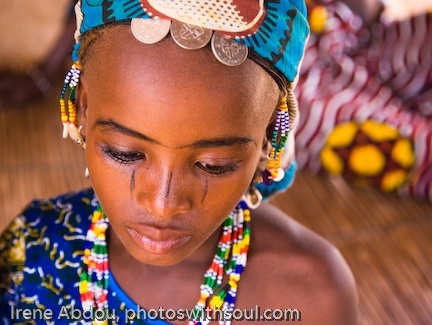  [img]http://mathildasanthropologyblog.files./2008/06/fulani-woman.jpg[/img] Ethiopian girl  Ghanaian [img]http://www.koreatimes.co/upload/news/081005_p07_ghanaian.jpg[/img] Ethiopian  South African  The nose thing is quite funny too, they all look deliberate, Why would ''just time'' affect the nose and lips of so many artefacts, and yet leave other parts of the body intact  ? ?Why is this phenomenon not replicated in other regions? Regarding the Sphinx itself, we actually KNOW the nose was blown off deliberately. The dispute is as to whether it was the Greeks (Alexander), or the Arabs, who came later, that did it. 2 Likes |
| Re: Tomb Art From Ancient Egypt: A Black African Civilization (pics) by Nobody: 2:12am On Sep 21, 2009 |
Various shades of Black (Temple Relief, Egypt) (I can see up to FIVE different shades of black in this image) [img]http://oi.uchicago.edu/museum/nubia/i/AEP79.jpg[/img] 1 Like 1 Share |
| Re: Tomb Art From Ancient Egypt: A Black African Civilization (pics) by Kobojunkie: 2:18am On Sep 21, 2009 |
What exactly is the point of this post? I ask because it has already been discovered that the Africa is the cradle of life. http://www.trussel.com/prehist/news231.htm |
| Re: Tomb Art From Ancient Egypt: A Black African Civilization (pics) by Beaf: 2:44am On Sep 21, 2009 |
Kobojunkie: It is about our history and what our traditions say as against what outsiders say is our history. No one is debating the cradle of life. . . A wretched topic not worth debating outside dogmatic circles, because there is no known definition of life. 3 Likes 1 Share |
| Re: Tomb Art From Ancient Egypt: A Black African Civilization (pics) by Nobody: 2:44am On Sep 21, 2009 |
Naijaking 1 wrote: @ROSSIKE lol, that's interesting. I actually think he looks like OBJ (in his younger days).  Recent scientific evidence shows that the Sahara has not always been a complete desert the way it is today, so if you have thriving communities, vegetation, and wild life all the way from Alexandria to Timbuktu, it would be easy for some of us to understand how proximal north and west Africa used to be. Absolutely. You can rest assured you have several HUGE cities buried underneath the millions of tons of sand in that Sahara. Like you said, the place was once a thriving region filled with greenery, lakes, orchards, and kingdoms. 1 Like |
(1) (2) (3) (4) (5) (6) (7) (8) (Reply)
Nigerian Military Unleashes Full Weaponry Against Boko Haram (pics) / Kano Bomb Blast In Pictures / Lockdown: Canadian Government Gave Us N626k Each, I'm Not Coming Home - Nigerian
(Go Up)
| Sections: politics (1) business autos (1) jobs (1) career education (1) romance computers phones travel sports fashion health religion celebs tv-movies music-radio literature webmasters programming techmarket Links: (1) (2) (3) (4) (5) (6) (7) (8) (9) (10) Nairaland - Copyright © 2005 - 2024 Oluwaseun Osewa. All rights reserved. See How To Advertise. 130 |